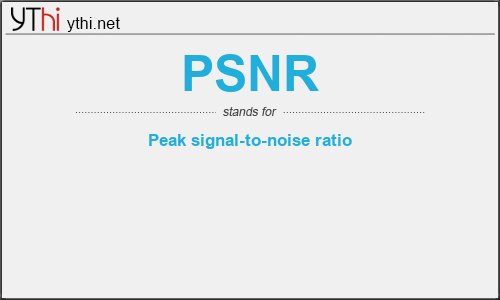What does PSNR mean? What is the full form of PSNR?
The Full Form of PSNR is Peak signal-to-noise ratio.
Peak signal-to-noise ratio, often abbreviated PSNR, is an engineering term for the ratio between the maximum possible power of a signal and the power of corrupting noise that affects the fidelity of its representation. Because many signals have a very wide dynamic range, PSNR is usually expressed in terms of the logarithmic decibel scale.
PSNR is most commonly used to measure the quality of reconstruction of lossy compression codecs (e.g., for image compression). The signal in this case is the original data, and the noise is the error introduced by compression. When comparing compression codecs, PSNR is an approximation to human perception of reconstruction quality.
Typical values for the PSNR in lossy image and video compression are between 30 and 50 dB, provided the bit depth is 8 bits, where higher is better. For 16-bit data typical values for the PSNR are between 60 and 80 dB. Acceptable values for wireless transmission quality loss are considered to be about 20 dB to 25 dB.
In the absence of noise, the two images I and K are identical, and thus the MSE is zero. In this case the PSNR is infinite (or undefined, see Division by zero).
PSNR
means
Peak signal-to-noise ratio![]()
Translate Peak signal-to-noise ratio to other language.


Leave a Reply
You must be logged in to post a comment.